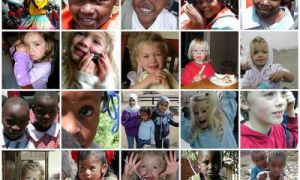

Setting children up for a confident and joyful start to school begins long before the first bell. This guide brings together evidence-informed strategies, play-based activities, and partnership ideas to help preschoolers develop the skills, independence, and emotional resilience they need for their big leap into school.
School readiness in early childhood refers to the cognitive, social, emotional, and physical skills that prepare children for formal schooling. High-quality early childhood education programs play a crucial role in enhancing school readiness by fostering language, literacy, numeracy, and social-emotional development.
Play-based learning and school readiness are closely connected, as this approach nurtures the skills children need to succeed in school while maintaining their natural curiosity and love of learning. The following article provides information on How Play-Based Learning Supports School Readiness, Examples of Play-Based Learning for School Readiness, How Do Children Learn Concepts Through Play Based Learning, Examples Of Learning Colours, Numbers, Shapes, Letters Through Play-Based Learning, Importance of Play-Based Learning and more.
Pre-writing skills are crucial for young children as they lay the foundation for future writing success. The following article provides information on What Are Pre-writing Skills, Importance Of Pre-Writing Skill Activities To Promote Pre-Writing Skills and more.
School readiness" refers to a child's preparedness to succeed in a school environment. It's not just about academic skills like reading, writing, and math, but also encompasses the development of the whole child, including their social, emotional, physical, and cognitive skills. The following article provides information on Key Aspects Of School Readiness, How To Support School Readiness and more.
Come along with Little Ted and Kiya as they prepare for their first day at primary school. This episode reflects some of the common experiences for children starting school for the first time, sharing helpful ‘tried and tested’ strategies to incorporate at home and in early learning settings.
Writing transition statements in early childhood education is an important task that helps ensure a smooth transition for children moving from early childhood settings to primary school. The following article provides information on the Purpose Of Transition Statements, Key Components Of Transition Statements, Tips For Writing Transition Statements, Examples and more.
Visual Motor Integration covers efficient and effective coordination between the eyes and the hands so that children are able to copy, draw or write what they see. Since children develop their handwriting based on what they see in a model and then imitate it in their own writing, they need to have effective Visual Motor Integration. The following article provides information on What Is Visual Motor Integration, VMI and Handwriting, Improving Visual Motor Skills and more.
Recently, Sarah Mitchell, the Minister of Education for NSW, proposed that all children enrol in school the year they turn six.
 Here is the list of the EYLF Learning Outcomes that you can use as a guide or reference for your documentation and planning. The EYLF… Read More
Here is the list of the EYLF Learning Outcomes that you can use as a guide or reference for your documentation and planning. The EYLF… Read More
 The EYLF is a guide which consists of Principles, Practices and 5 main Learning Outcomes along with each of their sub outcomes, based on identity,… Read More
The EYLF is a guide which consists of Principles, Practices and 5 main Learning Outcomes along with each of their sub outcomes, based on identity,… Read More
 This is a guide on How to Write a Learning Story. It provides information on What Is A Learning Story, Writing A Learning Story, Sample… Read More
This is a guide on How to Write a Learning Story. It provides information on What Is A Learning Story, Writing A Learning Story, Sample… Read More
 One of the most important types of documentation methods that educators needs to be familiar with are “observations”. Observations are crucial for all early childhood… Read More
One of the most important types of documentation methods that educators needs to be familiar with are “observations”. Observations are crucial for all early childhood… Read More
 To support children achieve learning outcomes from the EYLF Framework, the following list gives educators examples of how to promote children's learning in each individual… Read More
To support children achieve learning outcomes from the EYLF Framework, the following list gives educators examples of how to promote children's learning in each individual… Read More
 Reflective practice is learning from everyday situations and issues and concerns that arise which form part of our daily routine while working in an early… Read More
Reflective practice is learning from everyday situations and issues and concerns that arise which form part of our daily routine while working in an early… Read More
 Within Australia, Programming and Planning is reflected and supported by the Early Years Learning Framework. Educators within early childhood settings, use the EYLF to guide… Read More
Within Australia, Programming and Planning is reflected and supported by the Early Years Learning Framework. Educators within early childhood settings, use the EYLF to guide… Read More
 When observing children, it's important that we use a range of different observation methods from running records, learning stories to photographs and work samples. Using… Read More
When observing children, it's important that we use a range of different observation methods from running records, learning stories to photographs and work samples. Using… Read More
 This is a guide for educators on what to observe under each sub learning outcome from the EYLF Framework, when a child is engaged in… Read More
This is a guide for educators on what to observe under each sub learning outcome from the EYLF Framework, when a child is engaged in… Read More
 The Early Years Learning Framework describes the curriculum as “all the interactions, experiences, activities, routines and events, planned and unplanned, that occur in an environment… Read More
The Early Years Learning Framework describes the curriculum as “all the interactions, experiences, activities, routines and events, planned and unplanned, that occur in an environment… Read More

Oscar-Claude Monet was a pioneer of the French Impressionist style of painting. According to this...
See more...
In early childhood education, we talk endlessly about teamwork, collaboration, and shared responsibility. But when...
See more...
Many different people from different backgrounds, religions, beliefs and traditions make up Australia. We offer...
See more...© 2009-2025 Aussie Childcare Network Pty Ltd. All Rights Reserved.
